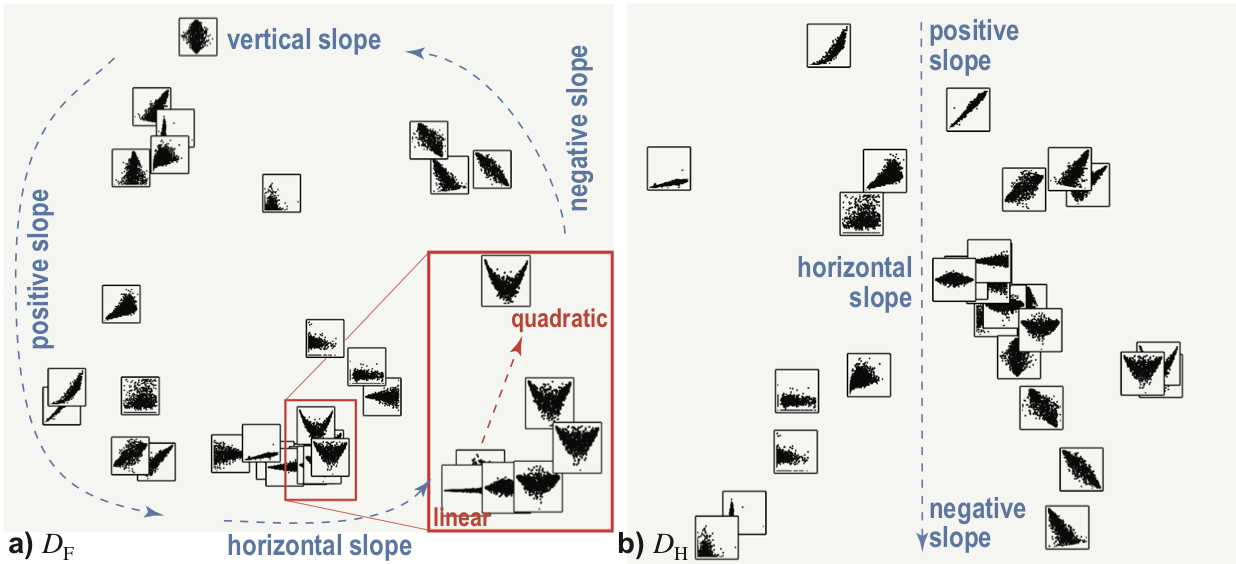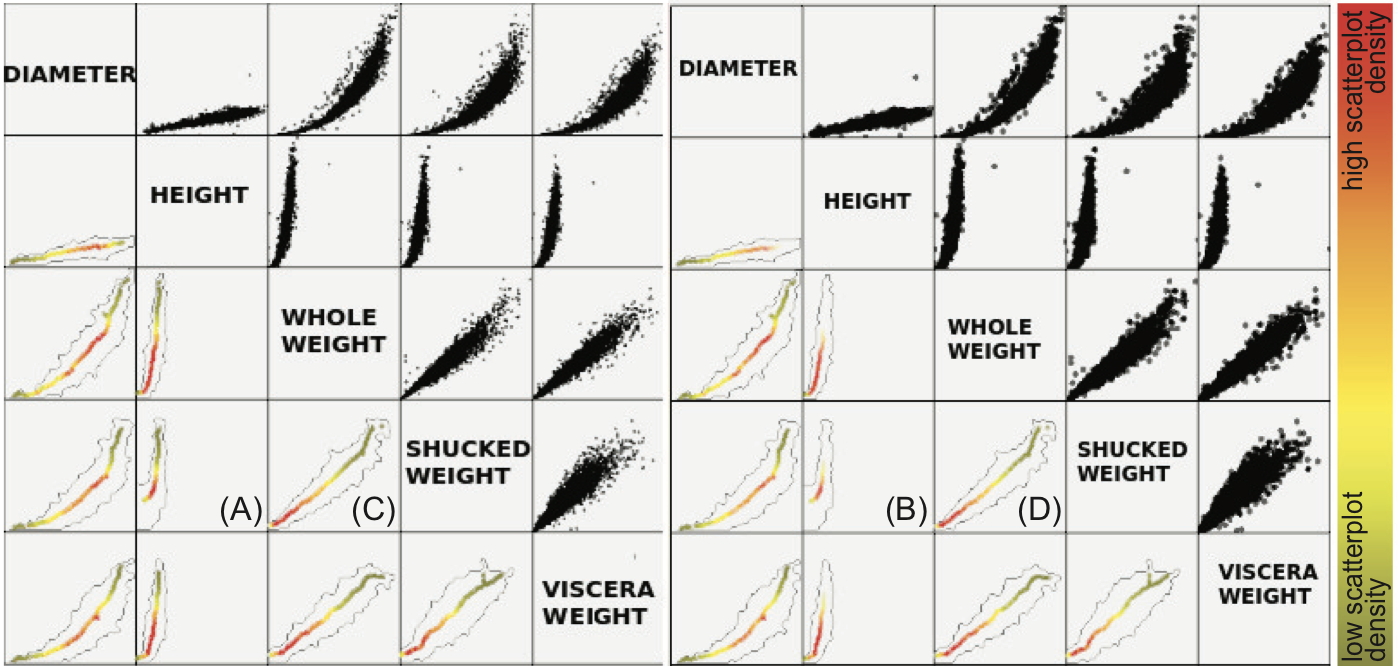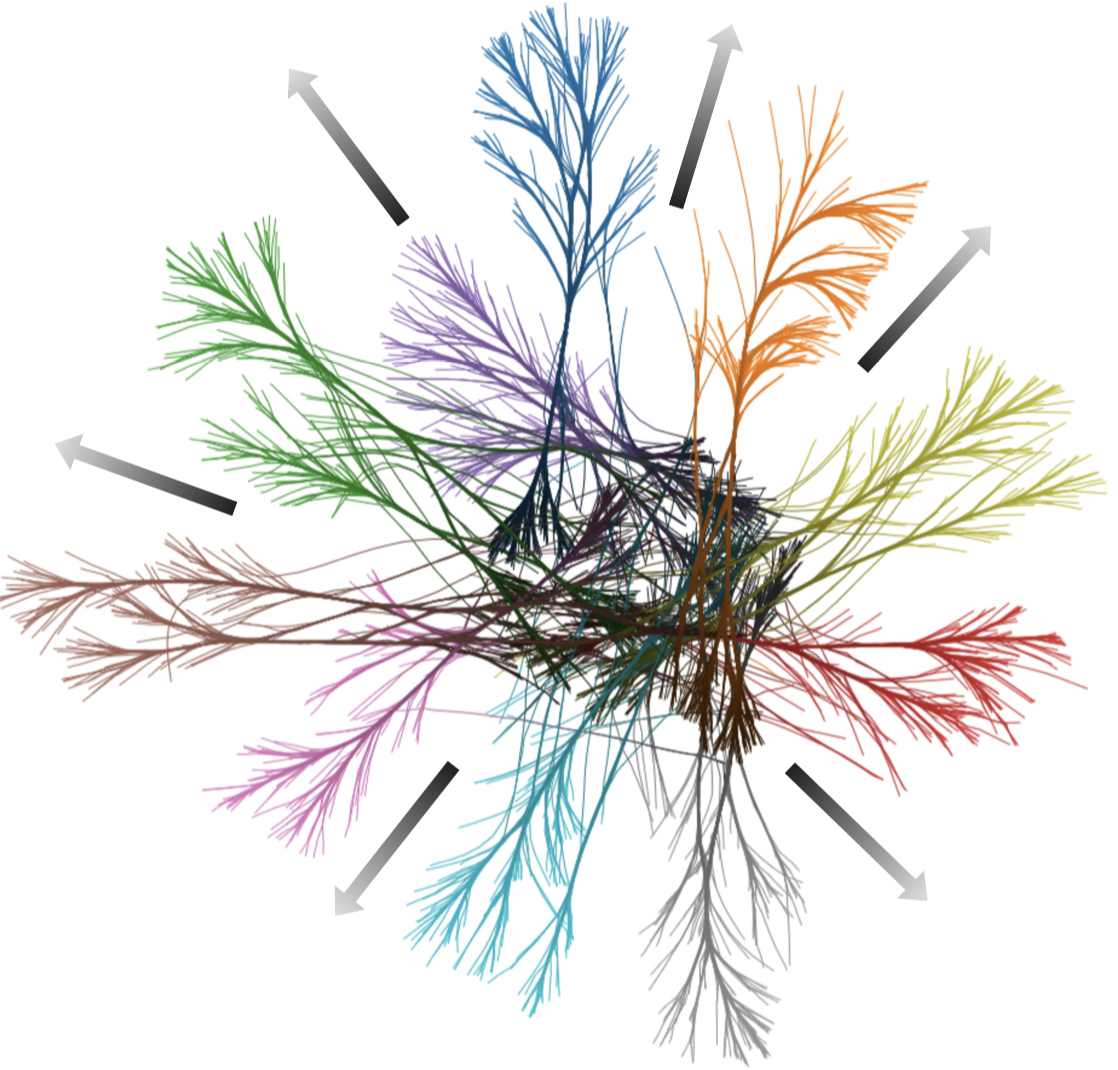Skeleton Based Scagnostics
Scatterplot matrices are an established tool for visual exploration of multidimensional datasets. For high-dimensional data, visualizing all scatterplots (created by any two dimension pairs) is ineffective. Scagnostics approach this by proposing metrics to select the interestingness of scatterplots based on analysis of their shape or orientation. However, combining shape and orientation in the same scagnostic measure is hard.
To solve this, we use shape skeletons: Well known in shape processing, these capture the geometr, orientation, and topology of complex 2D shapes. Our skeleton-based scagnostics works as follows (see image below):
- take a 2D scatterplot (a)
- blur its points with a Gaussian kernel (c)
- threshold the blurred image to get a binary shape (d)
- compute the distance transform (DT) of the shape (e)
- compute the skeleton of the shape (f)
Note how the skeleton (f) is very similar to other well-known scatterplot summarization tools such as principal curves (green (a), red (b)).
We can now efficiently and effectively compare scatterplots by comparing their skeleton descriptors. The image below shows several such plots, drawn in the 2D plane based on their similarity. We can see how our skeleton-based scagnostics metrics group scatterplots that have various types of similarities.

Besides comparing scatterplots, skeletons help also to summarize them. The image below shows a matrix with actual scatterplots (upper right half) and the same plots summarized by skeletons (lower left half). Color encodes scatterplot density. We have effectively reduced 2D scatterplots to 1D colored curves!

Implementation
Our method is generic (can handle any scatterplots), robust (to small variations or noise in the plot), and computationally efficient (computing the skeleton of a plot takes milliseconds on the GPU). All these are thanks to the underlying skeleton computation method.
References
Skeleton-based Scagnostics J. A. Matute Flores, L. Linsen, A. Telea. IEEE TVCG 24(1), pp. 542-552, 2018
